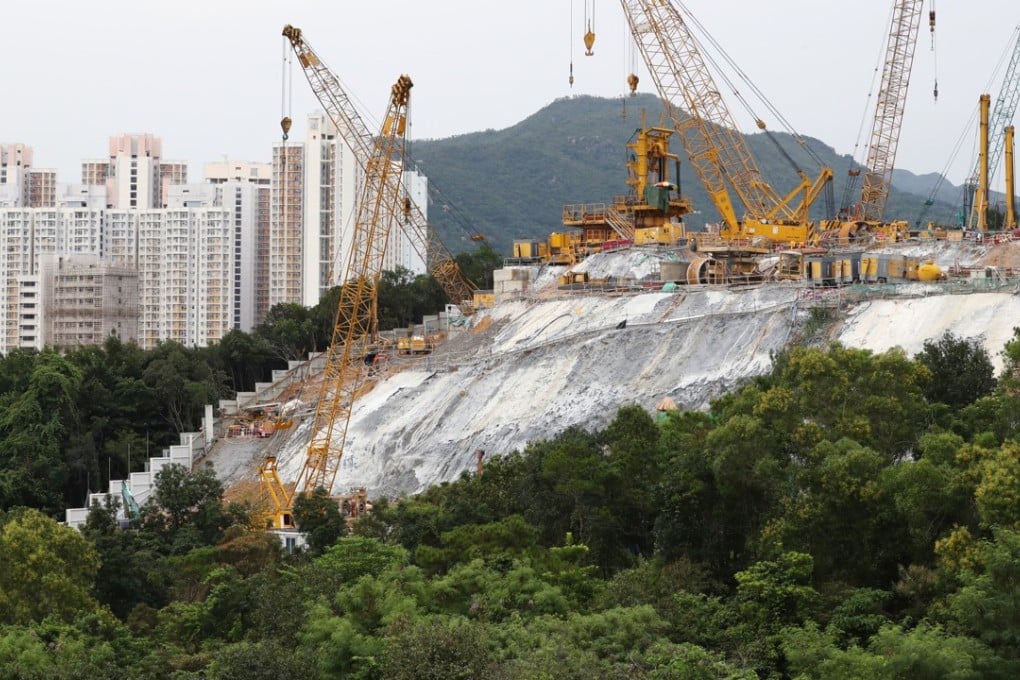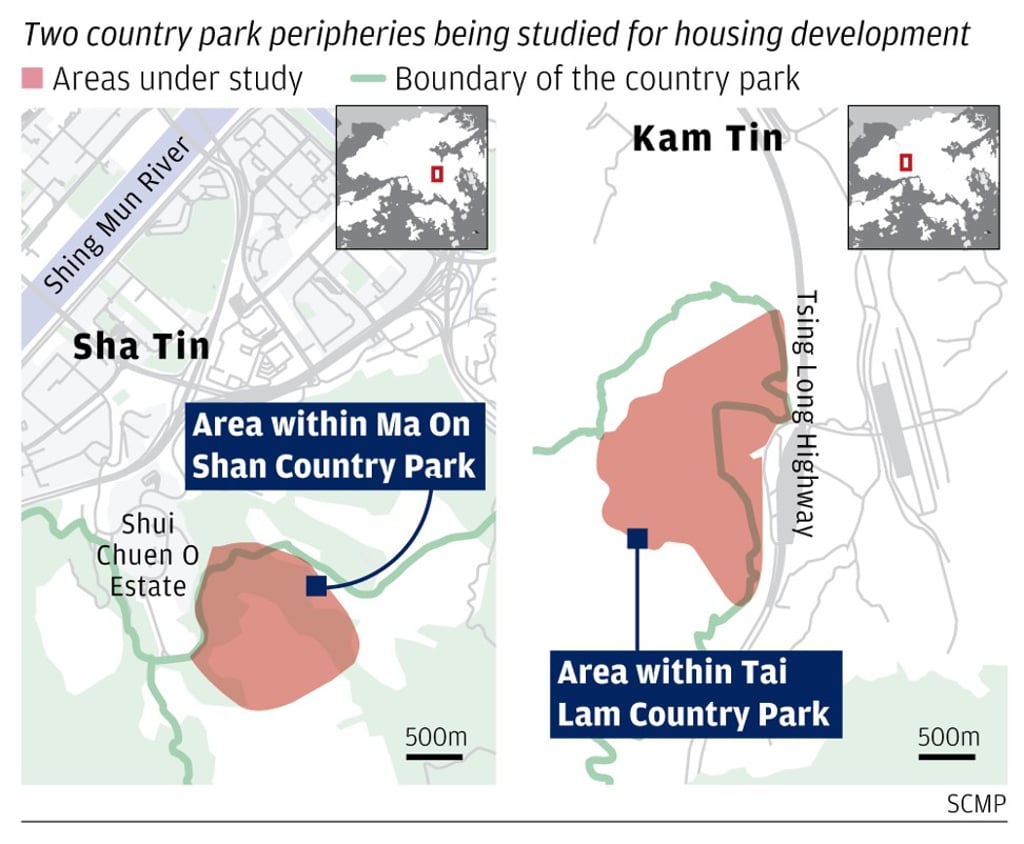Building on peripheries of Hong Kong’s country parks: solution to housing crisis, or paradise lost?
Officials are eyeing two peripheral areas of the city’s cherished country parks as sites for new housing, but detractors say such development will spread like a virus through some of Hong Kong’s most pristine natural environment

The rocky steps are steep and slippery after a night’s rain. Much of the track is hidden in lush bushes and tall grass. Along the route a stream trickles through the undergrowth.
“Trail! Trail!” echo the cries through the woods, followed by a man and woman emerging from a dense screen of foliage, both running in steady, vigorous strides.
The site is Sugar Loaf Peak, perched on the fringes of Hong Kong’s magnificent Ma On Shan Country Park. It borders a public housing estate named Shui Chuen O, meaning the place by the spring water.
The slope is one of two peripheral areas of Hong Kong’s cherished country parks where the government is considering building housing – an unprecedented move towards development on some of the city’s most pristine natural environment. A study of the site is under way, along with one into another space near the entrance to Tai Lam Tunnel inside Tai Lam Country Park.

Together the two areas add up to 40 hectares on which officials are pondering the feasibility of building public housing and non-profit elderly care homes.